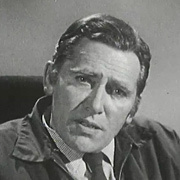
Ron McIntyre
When 23-year-old Ronald McLean McIntyre started with the Government Film Studios in Wellington in 1937, one of his first jobs was to travel around New Zealand, filming activities associated with the Labour Government’s programme of public works. The resulting film, New Zealand Marches On (1938), provided McIntyre with his first screen credit. He was also behind the camera for other GFS titles, including The Royal Mail (1940), and centennial feature film One Hundred Crowded Years (1941).
Other projects included newsreel work under an arrangement between the Tourist Department — which owned the GFS studios — and Fox Movietone News in Australia. Soon after, McIntyre was selected, alongside fellow cameraman Mervyn Elias, to form the Cinema Unit attached to the Second NZ Expeditionary Force. Sailing from Wellington with a group of reinforcements, they arrived in Cairo on 28 March 1941 and set up a base at nearby Maadi Camp. Hoping to go on to Greece to chronicle Kiwi soldiers in action, they were ordered to stay in Egypt, where they soon found themselves filming Kiwis returning from their disastrous campaign.
New Zealand Prime Minister Peter Fraser was in Egypt at the time. He was filmed meeting the returning kiwis, including shots of them marching by in parade at Helwan on 6 June 1941. The film, hurriedly dispatched to New Zealand and released on 11 July as The Prime Minister in the Middle East, marked the first footage from the Cinema Unit to be seen in New Zealand's picture theatres.
Five weeks passed before the release of Return from Crete, which showed bedraggled Kiwi soldiers coming ashore, including those who had rescued the King of Greece. The Government's National Film Unit was in the process of being set up, and the Miramar studios were still in the throes of reorganisation and expansion. By September 1941 the NFU had settled into a programme of weekly releases. Of the films they released before year's end, roughly half used Cinema Unit footage from the Middle East.
Filming was not without problems. Military authorities restricted what could be filmed, and censored the results. Long distances had to be travelled in a camera car equipped for Kiwi conditions. Desert heat and dust played havoc with cameras, which needed constant attention. These extremes led to McIntyre spending five weeks in hospital. Later, he endured the snows of Syria for an item on the Ninth Army Ski School.
In spite of these setbacks, stories continued to be filmed and sent back to New Zealand, and week after week audiences saw something of what their troops at the front were doing. Stories covering the advance across the desert as far as Tripoli, and then the advance through Italy, were generally incorporated into the Weekly Review, alongside items from the Home Front and the Pacific. Occasionally stories sent back were strong enough to fill a full reel of six to nine minutes, among them New Zealanders Visit the Holy Land (Weekly Review No. 121) and Winter Front (Weekly Review No. 135).
The proximity of studio and lab facilities in Cairo enabled the Cinema Unit to make a couple of films of their own, and screen them to the troops at the front. The first of these was 1942's Return to the Attack.
The last story filmed by McIntyre in Italy was Winter Quarters, which was used in Weekly Review No. 177. At the end of November 1944 he was sent home, having spent nearly four years overseas.
Encouraged by their war experience, McIntyre and Elias set out to make films independently, now that they were back home. Their first, made for short-lived business syndicate Kia Ora Attractions, documented a 1946 boxing match in Petone between Kiwi Bos Murphy and Australian Vic Patrick. Later that year, this time under the name Enterprise Film Productions, they made Meet the Dairy Farmer for Federated Farmers.
McIntyre joined the National Film Unit in 1948 as a senior cameraman, and filmed many items for Weekly Review including number 411, Maraetai (1949) which he also directed. Among his early colour films were The Cook Islands (1952), shot on 16mm, and Gateway to New Zealand (1952), shot on 35mm in Anscocolor. He was one of five cameramen to work on Royal New Zealand Journey, the Eastmancolor feature of the 1953-54 Royal Visit.
McIntyre's next film as director, trout fishing film Passport to Pleasure, fell foul of the Public Service Association after it was revealed that the film’s producer William Burnside, wasn't a public servant, despite having been in charge of the NFU crew making the film. McIntyre had left the NFU before the film's release, having resigned near the end of 1955 (the same is true of the Kathleen O'Brien-directed Letter to the Teacher).
Joining Pacific Films in 1957, McIntyre filmed In Good Hands, made for the NZ Manufacturers’ Federation, plus several other commissioned films. He then withdrew from film production to pursue other business interests.
In 1972 he picked up an old Eyemo movie camera again. This time the camera was simply a prop while he was interviewed for ‘The Desert’ episode of NFU TV series The Years Back, recalling the challenges of filming Kiwi troops in action during the war.
Ron McIntyre died in Auckland on 5 September 1997, aged 83.
Writing and original research by Clive Sowry; profile updated on 30 August 2020
Sources include
Ronald McIntyre, Films Without Make-Up (Cairo: R. Schindler, 1943)
The Years Back - The Desert (Episode Five - Television Documentary) Director Derek Wright (The National Film Unit, 1973)
‘McIntyre, Ronald McLean’ (Death Notice) – The NZ Herald, 11 September 1997, page D8
Unknown writer, ’New Film Deals With Life Of N.Z. Industry' – The Evening Post, 22 October 1957, page 6
Unknown writer, ‘Farming Film. First Documentary. Initial Screening' – The Evening Post, 17 December 1946, page 10